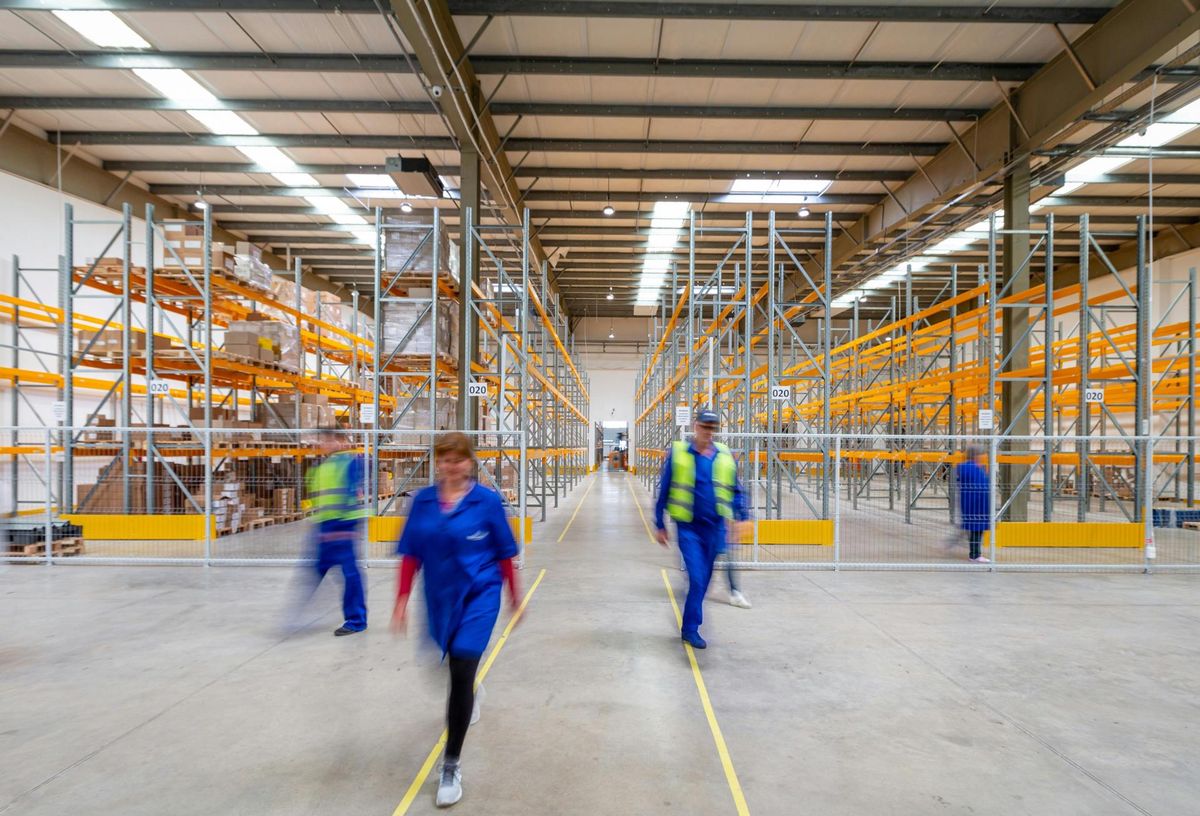Thor Equities’ 230K SF industrial facility in Passaic, New Jersey, was once more than 25% larger than it is today, but after acquiring the property at 153 Linden St. in 2022, the developer decided to chop 70K SF of the building off.

Demand from third-party logistics tenants made up 32% and 26% of second- and third-quarter leasing activity, respectively.
It may seem counterintuitive to maximizing a building’s income potential, but doing so made room for new docks and parking and allowed the developer to bring in two tenants instead of one.
“George, who does our leasing here, he would like to divide this into four if he could, because that’s where the demand is,” Thor Executive Vice President Peter McEneaney said onstage at Bisnow’s Northeast Industrial and Logistics Conference, held last week at 153 Linden.
For years, developers have built colossal warehouses that could attract the likes of Amazon, Home Depot and Target. Such big-box tenants needed as much square footage as possible to ship goods to the nearly 24 million people living in the New York Tri-State area.
Overlooked were smaller tenants, anyone from local auto repair shops to modest third-party logistics providers. Such companies were already expanding operations following the pandemic-related e-commerce boom and have more recently been inundated with business since President Donald Trump’s tariffs were implemented, according to Kearney’s 2025 state of logistics report.
Those factors are “pushing 3PLs to move beyond intermodal logistics and invest in regional hubs and last-mile delivery networks,” the report says.

Bisnow/Remi Karp
Pivot Energy’s Remi Mignott, Bluewater Property Group’s Christina Bernardin, Arco Design/Build’s Jim Wyatt, Raise The Roof Logistics’ Rob Marek, Thor Equities’ Peter McEneaney and Premier Design + Build Group’s Jason Hart
Demand from 3PLs made up 32% and 26% of second- and third-quarter leasing activity, respectively, according to CBRE.
The trend is reflected nationally. Megawarehouse leases — those 1M SF and larger — accounted for 13 of the top 100 leases signed in the first half of the year, compared to 31 during the same period last year. 3PLs inked 38 of the leases on that list, up from 28, according to another CBRE report.
The average lease size among the largest 100 deals signed dropped to 718K SF from 814K SF a year earlier.
But small-bay tenants operate differently than the industrial beasts with massive footprints, making it a harder space to navigate for landlords and nearly impossible to retrofit warehouses originally designed for a single tenant.
“We’re really the apartments of industrial,” Doors and Spaces Industrial Managing Partner Brian Whitmer.
Tenants have short windows between leasing and moving in, making it difficult to prelease a building, Whitmer said.

Bisnow/Sasha Jones
Trammell Crow Co.’s Andrew Mele, Realterm’s Nick Dupuis, Prologis’ Read Mortimer, Brookfield’s Tyler Mordas and Citrin Cooperman’s James Catalano
Plus, the space has to be flexible. Some tenants want swing space, others may ask for a retail storefront. Needs for offices, docks and racks can also vary.
Given rapidly fluctuating tariffs and resulting market uncertainty, 3PLs have brought with them even more requirements.
“What we’ve seen is a lot of tenants who want the cheapest space they can get for the shortest term with the most [tenant improvement],” Trammell Crow Co. Senior Managing Director Andrew Mele said during the event. “Period. Full stop.”

Bisnow/Sasha Jones
Nexamp’s Felix Aguayo, Deugen Developments’ Eric Gormeley, RL Cold’s Zach Romano, the Port Authority of New York and New Jersey’s Amanda Valdes, Doors and Spaces’ Brian Whitmer and Greek Real Estate Partners’ Matt Schlindwein
The CBRE report says that while free rent and attractive TI packages began to pick up in mid-2023, when a glut of new industrial space came online, landlords only more recently have begun to concede on rents.
In the third quarter, average asking rent in the Northeast fell by 1.7% year-over-year. While the Philadelphia metro had gains of 4% in that time, northern and central New Jersey saw year-over-year dips of 6% and 3%, respectively, according to the report.
The vacancy rate in the Northeast stands at just under 8% as of the third quarter, which was the 14th consecutive quarter that percentage has ticked up.
Construction completions totaled 3.8M SF in the third quarter, and there’s still another 28M SF in the pipeline. Meanwhile, small-bay tenants, who operate in shorter time frames, are getting antsy over construction timelines that keep lengthening.
“Speed to market is still king,” McEneaney said. “We’re all trying to deliver it as fast as possible, because that helps our IRR, it helps returns and it helps us exit quickly at the end of the day.”

